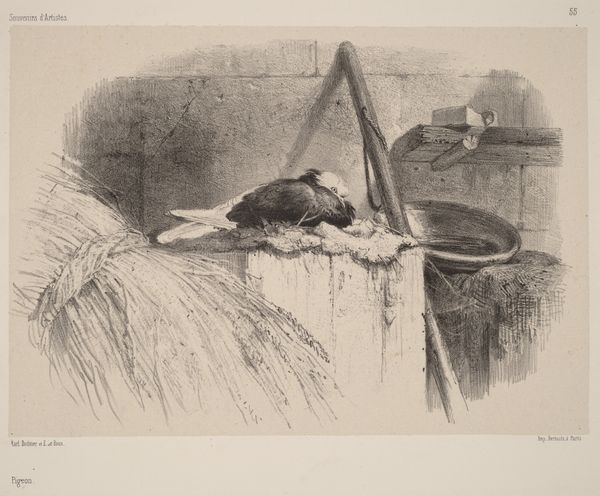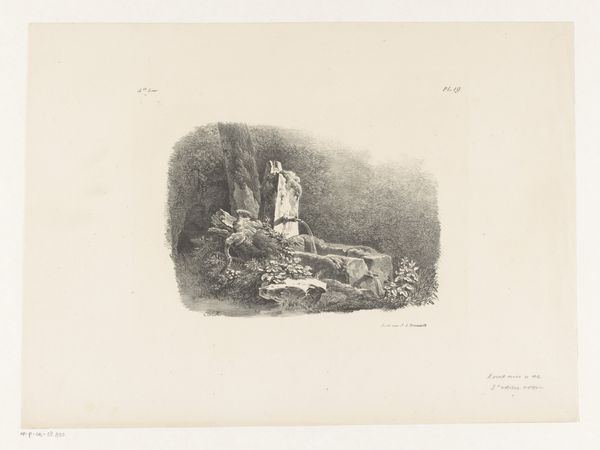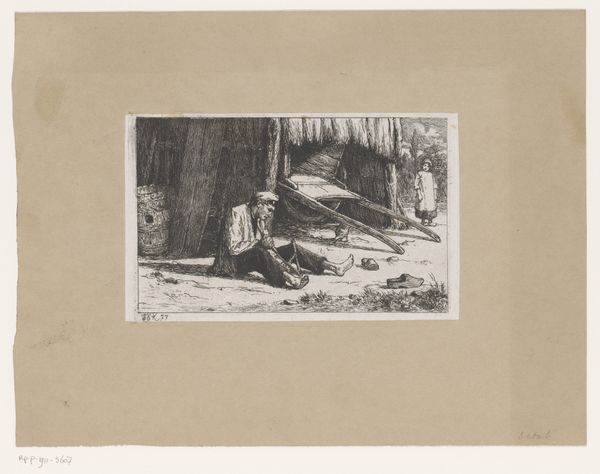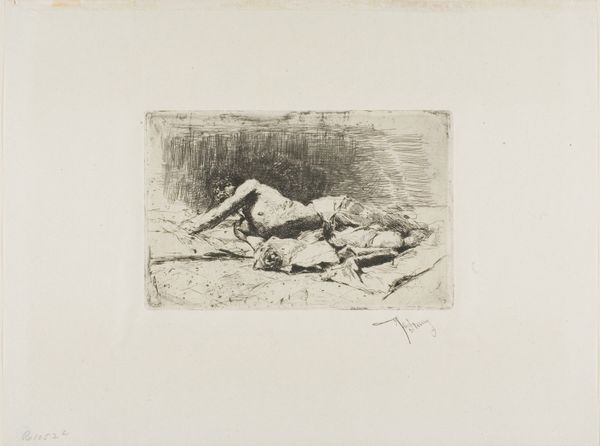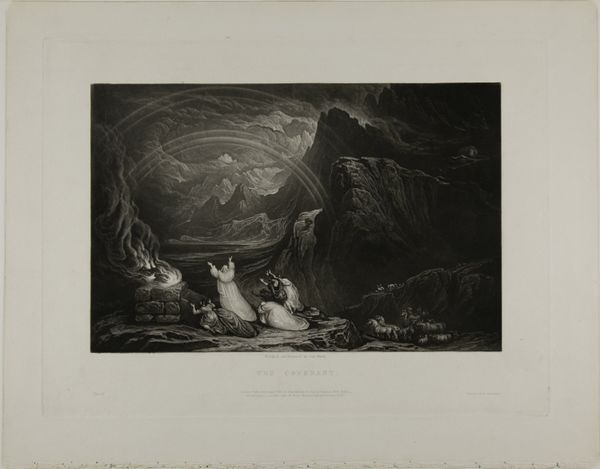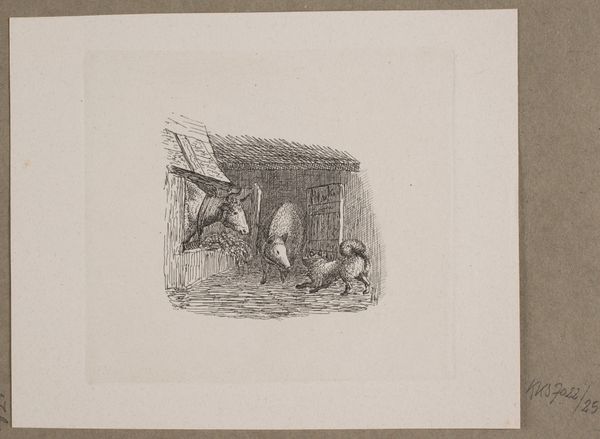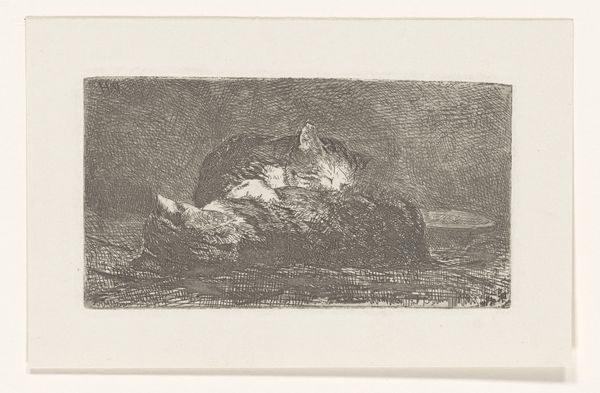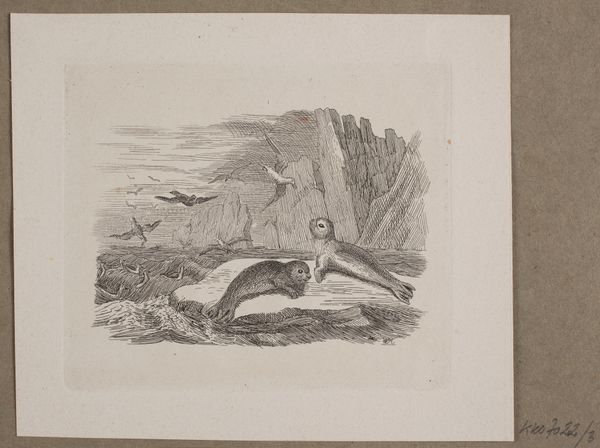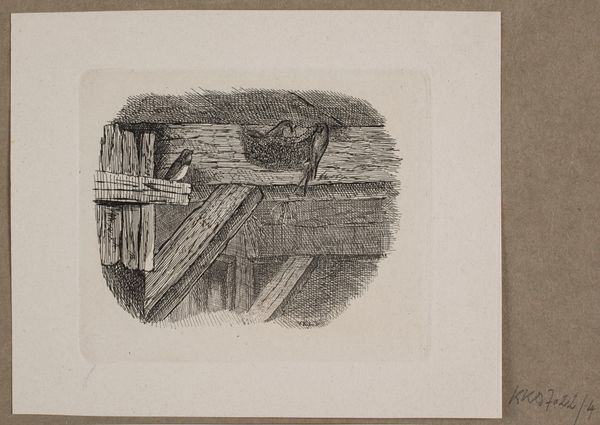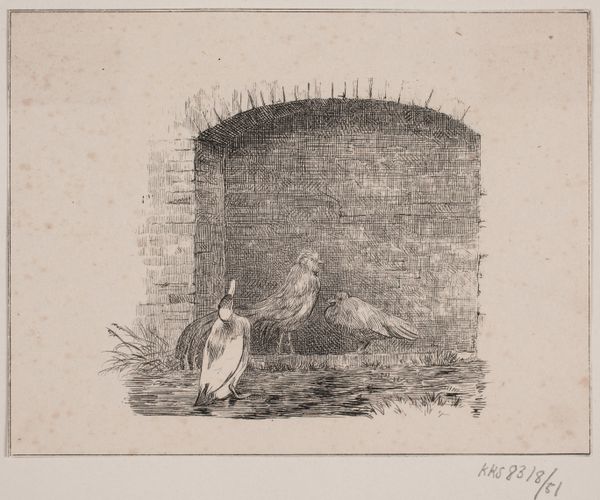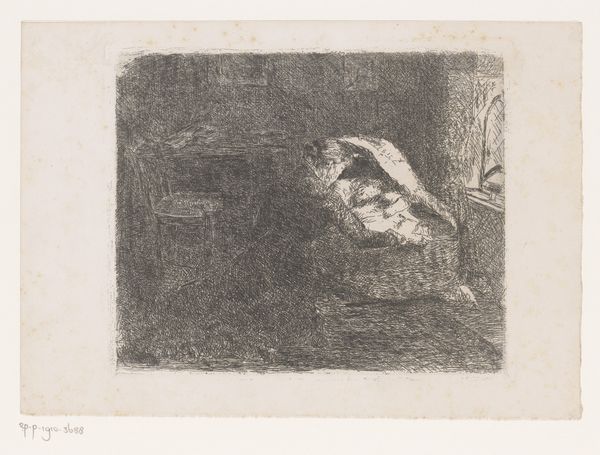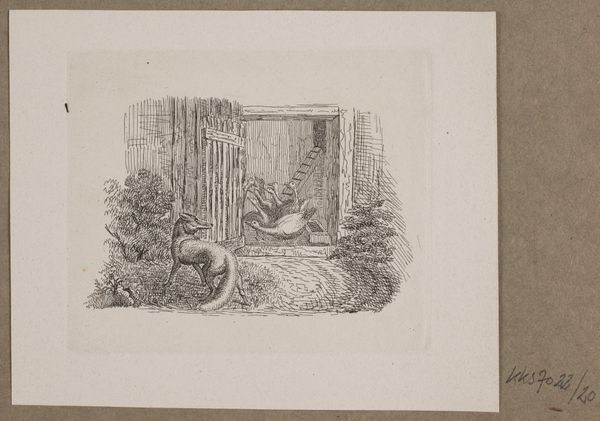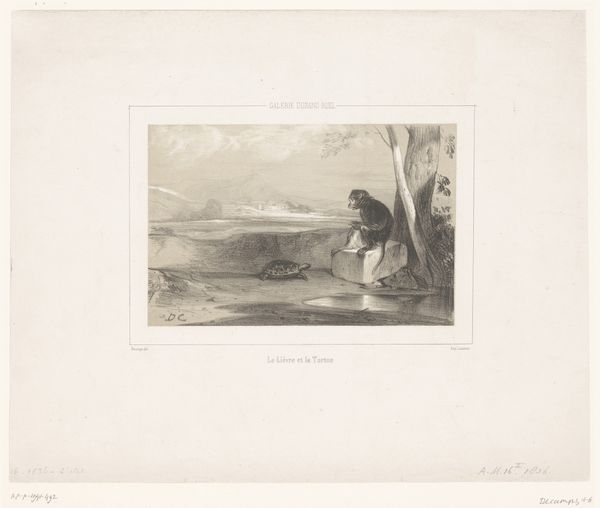
print, etching
# print
#
etching
#
landscape
Copyright: National Gallery of Art: CC0 1.0
Curator: Here we have Karl Bodmer’s etching titled “Pigeon sur un nid.” Editor: My first impression is of a scene bathed in quiet contemplation, almost like a little secret world we've stumbled upon. The stark contrasts of light and shadow evoke a somber but intimate mood. Curator: An etching is essentially a printmaking technique, so we are dealing with the transformation of labor into multiple works for circulation. We also have to think about access to materials at that time. The plate preparation, the acid-etching process, the physical printing – the labor is a key component. Editor: Right. I'm especially drawn to the symbol of the pigeon. Pigeons often signify peace, nurturing, and domesticity. This one is nestled on what looks like rough-hewn wood, juxtaposing the fragile bird with a robust element. The image plays with the idea of refuge amidst raw, almost crude surroundings. Curator: Yes, look closer, and we realize it is a cut stump, possibly once part of a larger, commercially viable tree, or maybe it was cleared for construction. Consider that the wood is providing the means of safety for a creature vulnerable to predation in its environment. This piece evokes complex questions of value. Editor: I see that! There is even a wooden container next to the stump. Beyond physical safety, there’s almost a spiritual suggestion—a visual poem on protection, perhaps reflecting human desires for safe haven? Curator: Absolutely. But let's bring it back to earth. What type of ink was used, how was the paper sourced and produced? It really adds another dimension to how the final work is perceived. Editor: The thought of production definitely reframes the image. Still, the emotional undercurrent of care remains a powerful force within the composition, regardless of material origins. Curator: A perspective often overshadowed when considering fine art practices versus folk-art ones, something Karl Bodmer challenges our perspectives on. Editor: A fine reminder of how cultural, historical, and personal symbolisms intersect, and it invites us to seek meanings not only within the art itself, but within the means that made the image possible.
Comments
No comments
Be the first to comment and join the conversation on the ultimate creative platform.
